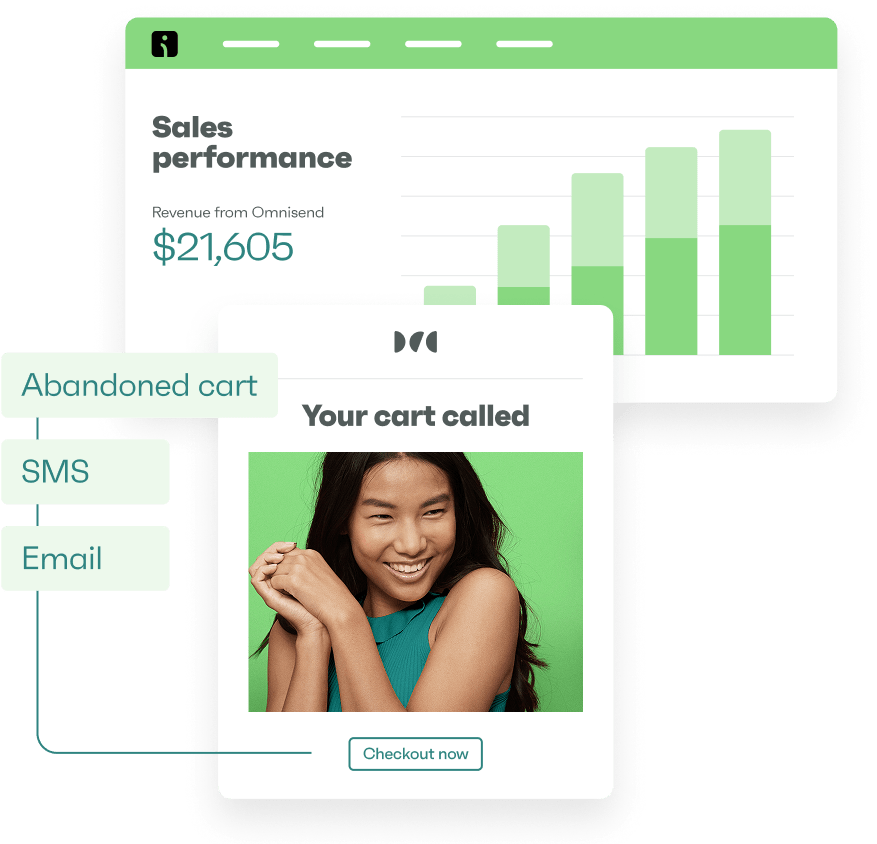Drive sales on autopilot with ecommerce-focused features
See FeaturesYou thought generative AI just entered the chat? Well, it didn’t stop there. It pulled up a chair, grabbed your shopping list, and started making suggestions.
From product research to deal hunting, tools like ChatGPT are becoming a staple of the online shopping experience. And the big players aren’t sitting it out as OpenAI is building an AI-powered checkout flow. Amazon, Walmart, and Mastercard are all testing agentic tools. And at this point, it’s less theory, more infrastructure.
Not everyone is handing over their wallets just yet. But AI is already shaping what ends up in the cart.
In July 2025, we surveyed 4,000 adults across the US, UK, Canada, and Australia to find out how shoppers are actually using AI and where they still draw the line.
Here’s what we found.
Quick-glance findings
We’re done with the experimental phase — Gen AI has officially gone mainstream in online shopping:
- Around 50% of online shoppers in each country use Gen AI for ecommerce tasks at least once a month
- ChatGPT dominates and is preferred by 46% of respondents who use AI for shopping
- 1 in 4 say ChatGPT gives better product suggestions than Google
- 85%+ report at least one concern: privacy, AI fatigue, or bad recommendations
- 1 in 3 shoppers still don’t want AI handling checkout
In short, AI has earned a seat at the shopping table, but not full control of the wallet just yet.
Now let’s go deeper into these findings.
How consumers are actually using AI for shopping
Futuristic fantasies aside, the way regular people are using Gen AI for shopping is… Well, regular and expected.
Across the U.S. (53%), UK (50%), Canada (49%), and Australia (49%), around half of consumers now use Gen AI tools like ChatGPT, Amazon Rufus, and Google Gemini for shopping tasks at least once a month.
Top use cases are:
- Product research — 57% (U.S.), 33% (CA), 34% (UK), 34% (AU)
- Product recommendations — 45% (U.S.), 26% (CA), 28% (UK), 27% (AU)
- Finding deals — 40% (U.S.), 20% (CA), 19% (UK), 18% (AU)
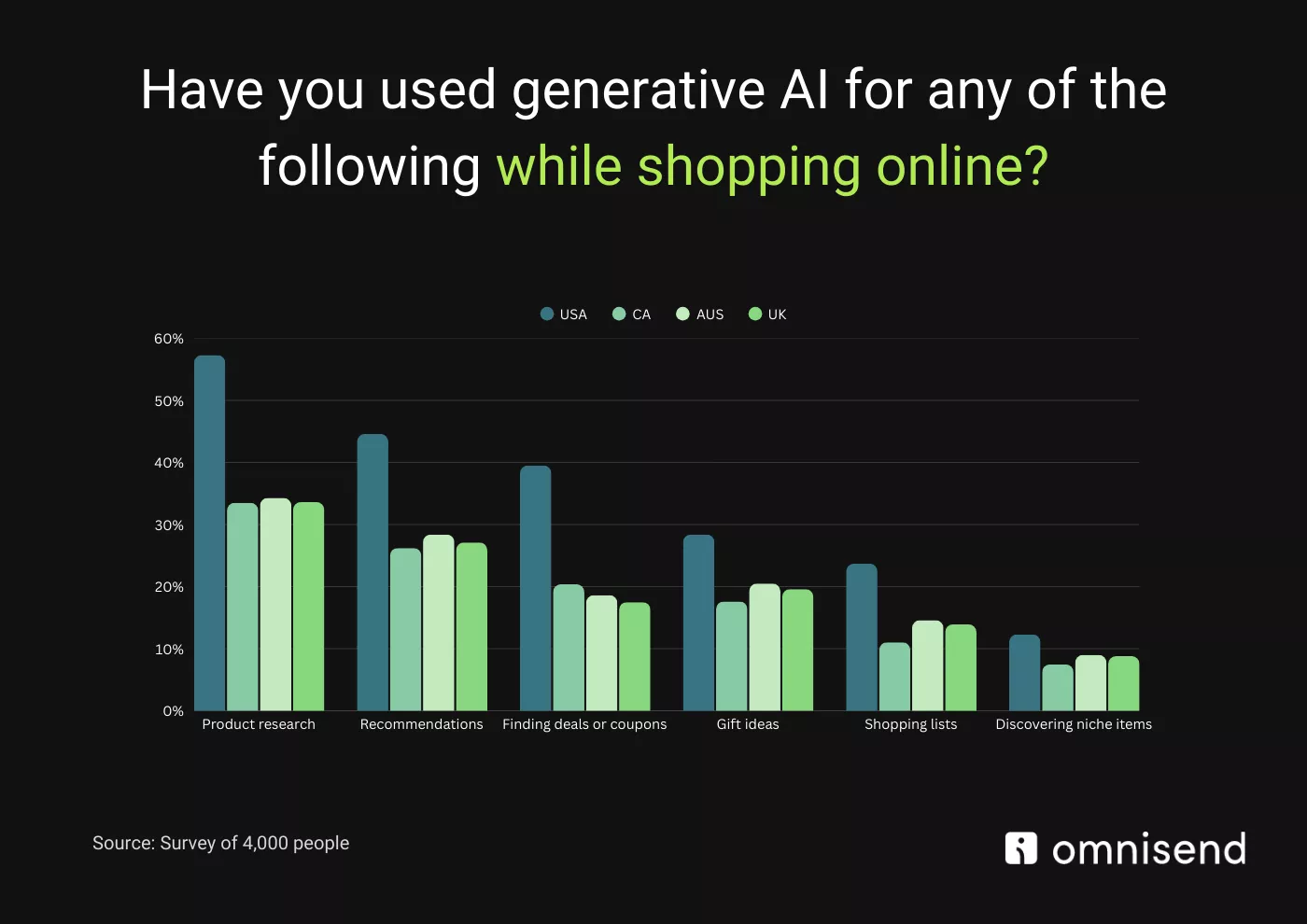
Among those using AI, ChatGPT is the clear favorite. Across all four countries, 46% of users name it their go-to assistant — rising to 65% in the U.S. In addition, 25% of U.S., 25% of UK, 26% of Canadian, and 27% of Australian shoppers say ChatGPT’s recommendations beat Google’s.
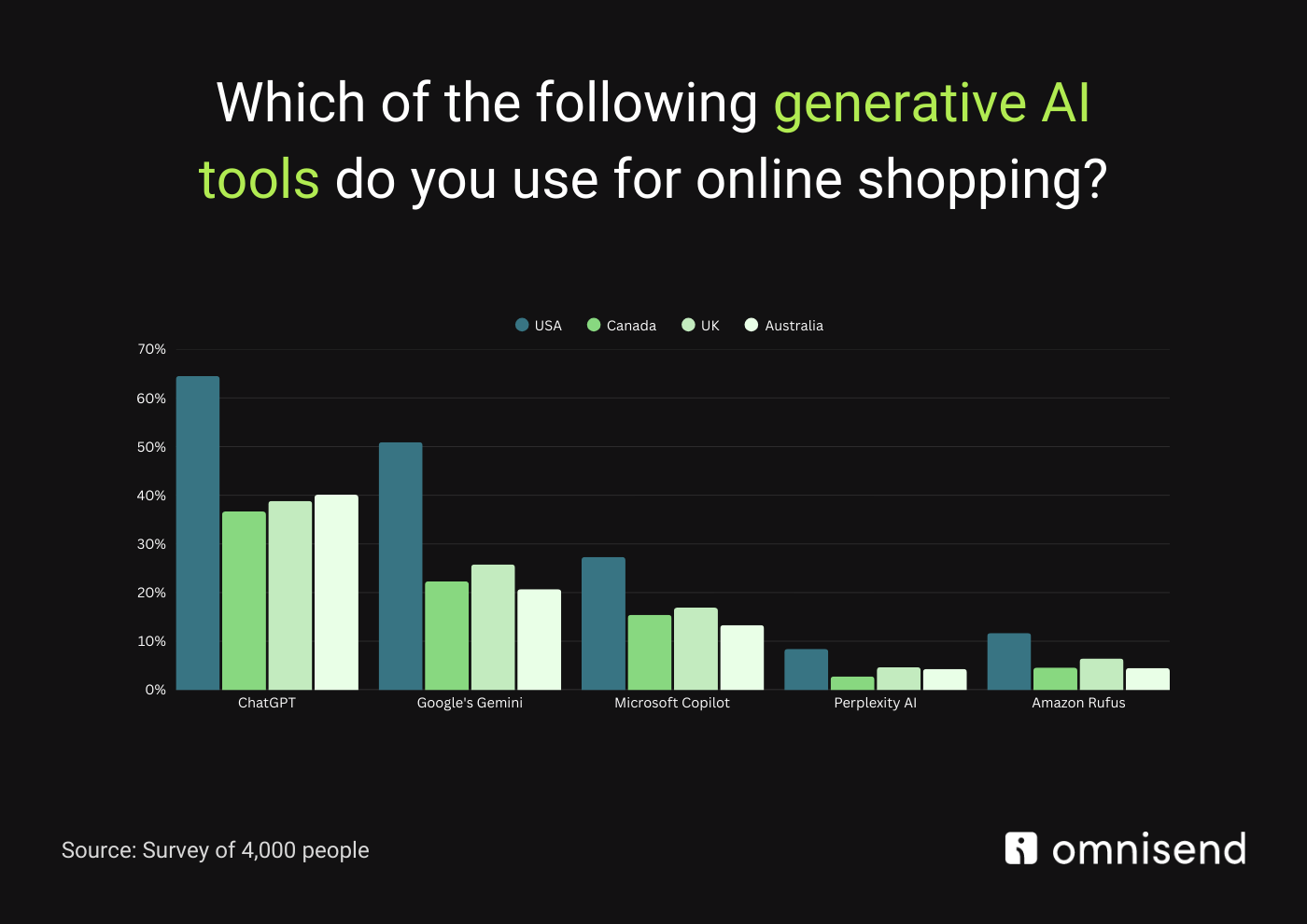
But why the shift?
As our Ecommerce Expert Marty Bauer explains: “Googling often means ads, SEO content, and dozens of open tabs before you find what you need. Gen AI tends to act like a knowledgeable friend — it distills, summarizes, and points you in the right direction without the noise.”
AI’s growing appeal and its limits
Convenience is winning over more shoppers, but not without concern.
Across all four countries, about 27–29% of consumers say AI makes online shopping feel less overwhelming. Some even trust AI suggestions more than influencers or friends.
So the confidence is definitely starting to show: 13.9% of Australians, 13% of Brits, 12.5% of Americans, and 10.8% of Canadians say they’re more likely to buy when AI supports their decision.
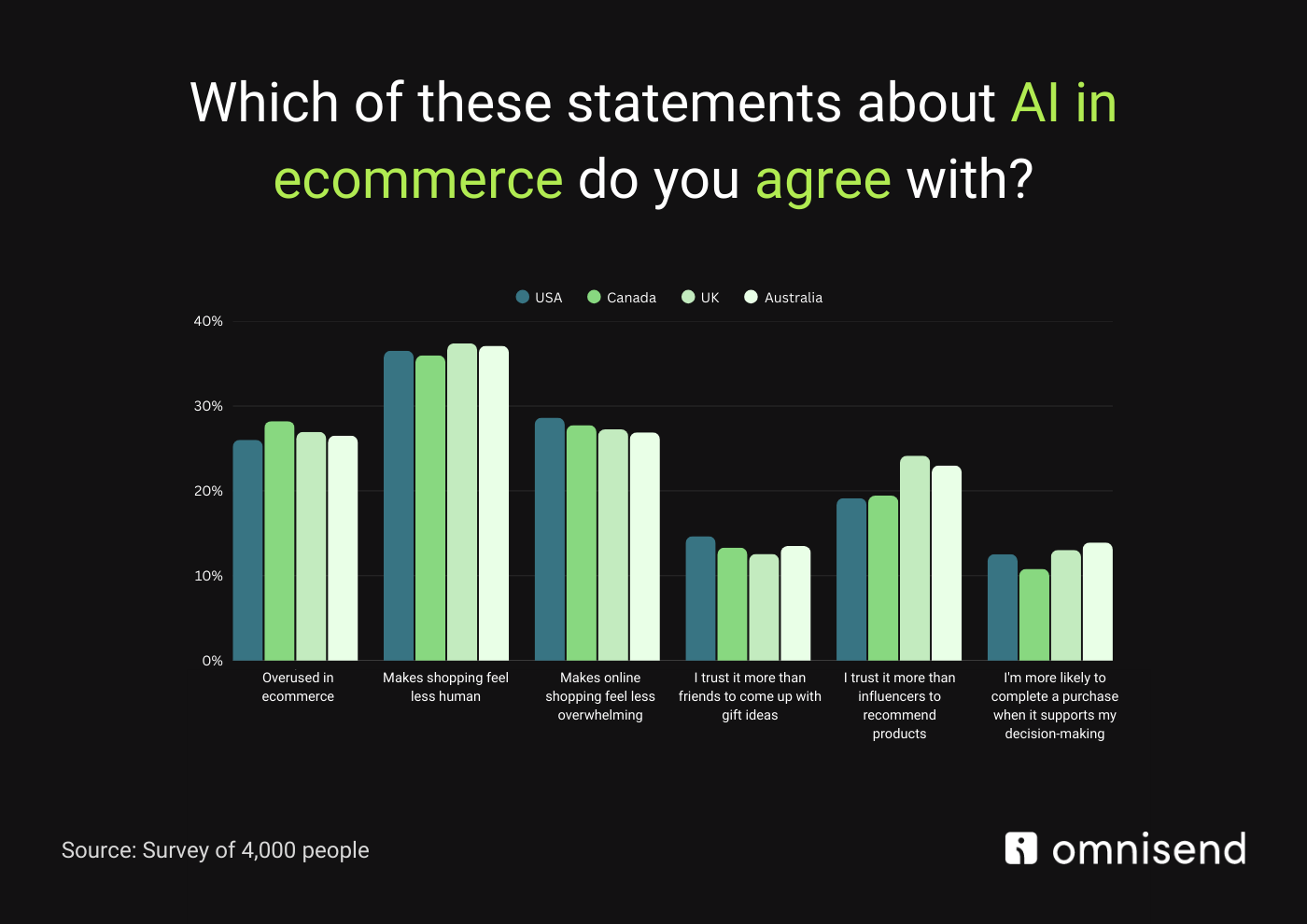
But trust only goes so far. Especially with something that to regular consumer eyes is so new and still relatively unknown.
85%+ report at least one concern, including:
- Privacy and data security — 43% (U.S.), 41% (CA), 42% (UK), 45% (AU)
- AI misinterpreting preferences — 37% (U.S.), 38% (CA), 40% (UK), 36% (AU)
- Irrelevant suggestions — 35% (U.S.), 40% (CA), 37% (UK), 36% (AU)
- AI overuse — 26% (U.S.), 28% (CA), 27% (UK), 27% (AU)
In addition, around 32% shoppers in each country still feel reluctant to let AI handle purchases on their behalf.
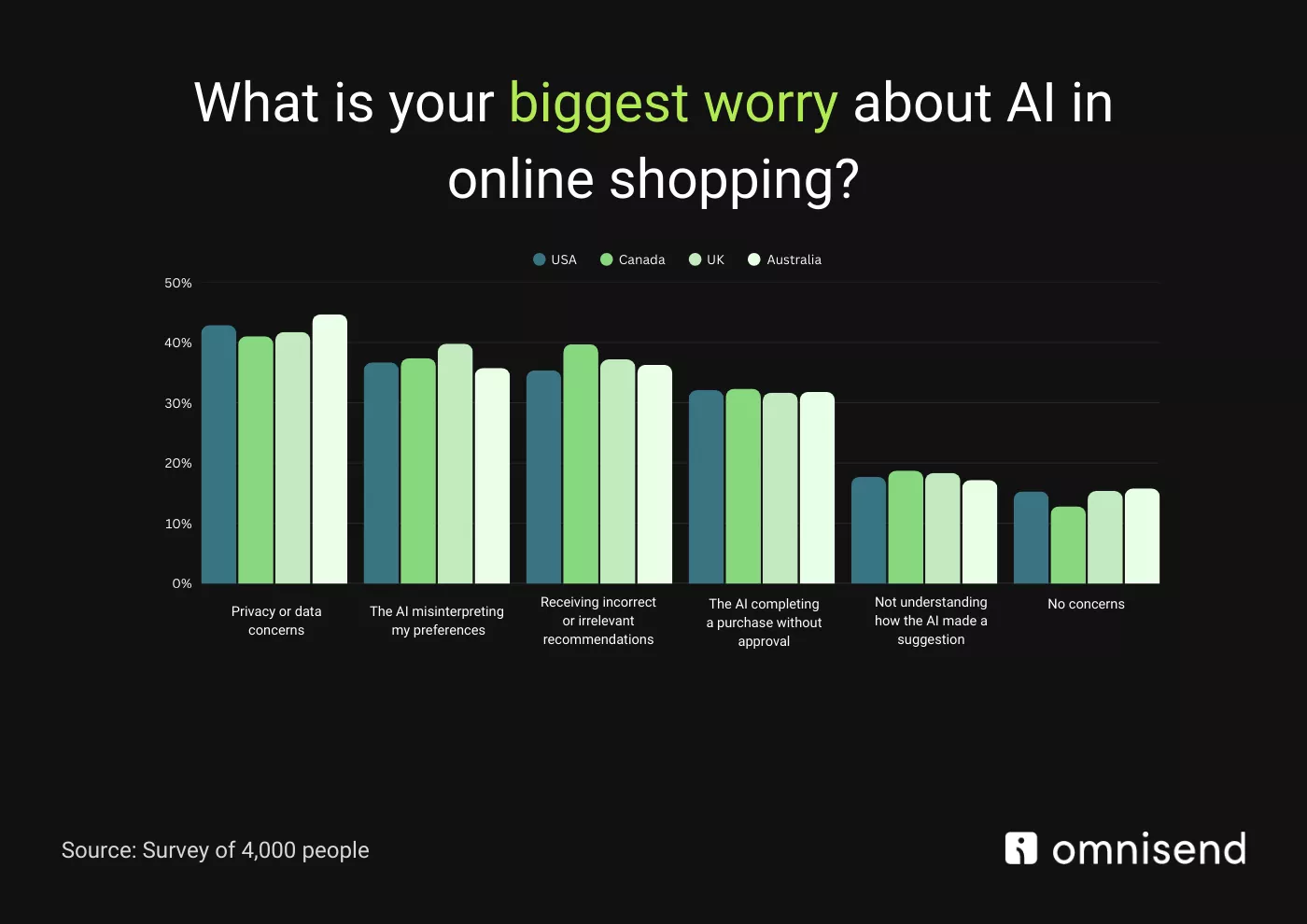
“Openness to AI is clearly on the rise,” Marty says. “But there’s a big difference between offering helpful suggestions and giving someone access to your wallet. As trust issues remain, ecommerce brands must be crystal clear about where, why, and how they use AI.”
What this means for ecommerce
Gen AI is no longer a novelty.
Shoppers are already using AI to explore, compare, and filter. But that doesn’t mean they’re ready to outsource everything. The bar is set higher — AI has to be genuinely helpful, trustworthy, and transparent.
Want the full dataset or an expert interview?
Reach out to [email protected] for more.
TABLE OF CONTENTS
TABLE OF CONTENTS


No fluff, no spam, no corporate filler. Just a friendly letter, twice a month.

 OFFER
OFFER







